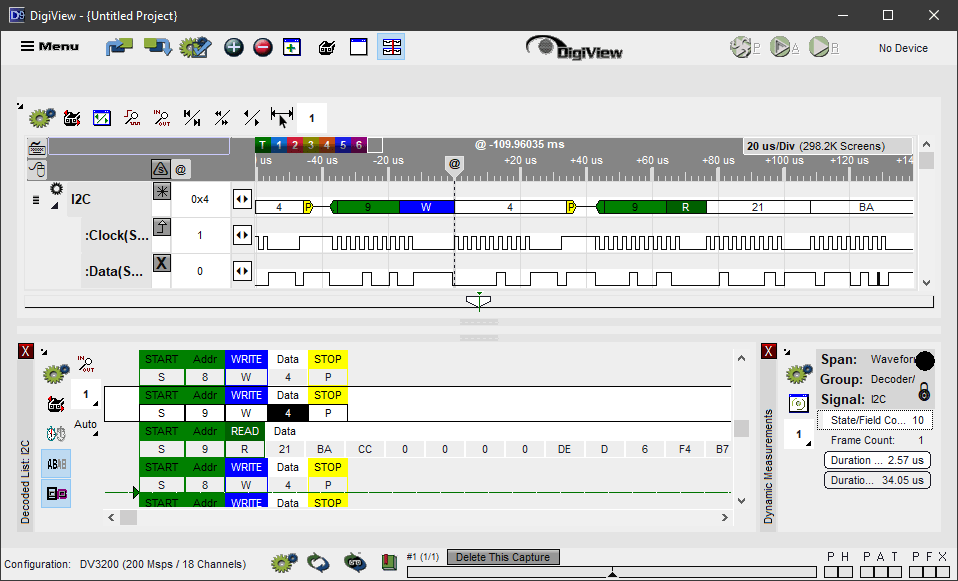Software Details
DigiView software is included in each hardware purchase and freely available from our website. The software features and operation are fully described in the manual. The DigiView manual is included in the software download. It is also available as a separate PDF download.
- Easy install, uninstall
- No unlock codes or registration required
- The same software you receive with the hardware; Not a crippled or 'trial' version.
- Never 'calls home' or sends telemetry
- Includes real capture files to help you do pre-purchase evaluations
- Fully functional without hardware (except doing new captures)
- You can use the software to view/analyze colleagues' DigiView captures - even if you do not own a DigiView
- You own your captures. You can install the software and access your old captures even without the DigiView.
Performance
No; we are not claiming you should expect this size of captures. Your captures will be very large, but are highly unlikely to be this large.
However, this number is possible with sparse data (<12 transitions / sec.) so we designed DigiView to handle it.
If we can handle this edge case, then you can be assured we can handle more 'typical' captures.
See Capture Count for realistic capture estimates for your typical data.
Many of DigiView's features depend on processing the entire capture. Each protocol decoder and plugin, as well as many measurements/statistics have to process ALL of the data. Auto-searches search the entire dataset as well. Each signal in each waveform view has to read all of the data in the waveform time span to render the screen. When the screen is zoomed all of the way out, that means reading ALL of the data.
Reading and processing this much data even once could result in significant delays, even on the fastest machines. Obviously we need to process the data multiple times in multiple different ways if we want to keep our existing features.
We had to get innovative to ensure a responsive application without giving up any features or reducing the capture size.
The compression used by the hardware is optimized to reduce storage and USB bandwidth, but is not random-access friendly. We trans-compress the data to a slightly less storage efficient, but much more random-access friendly format. This allows us to keep the entire capture in memory. This, plus some highly optimized access routines and creative indexing and caching schemes allowed us to reach our goals.
Despite the huge amount of data and the data intensive features, we think you will find that the application is very responsive.